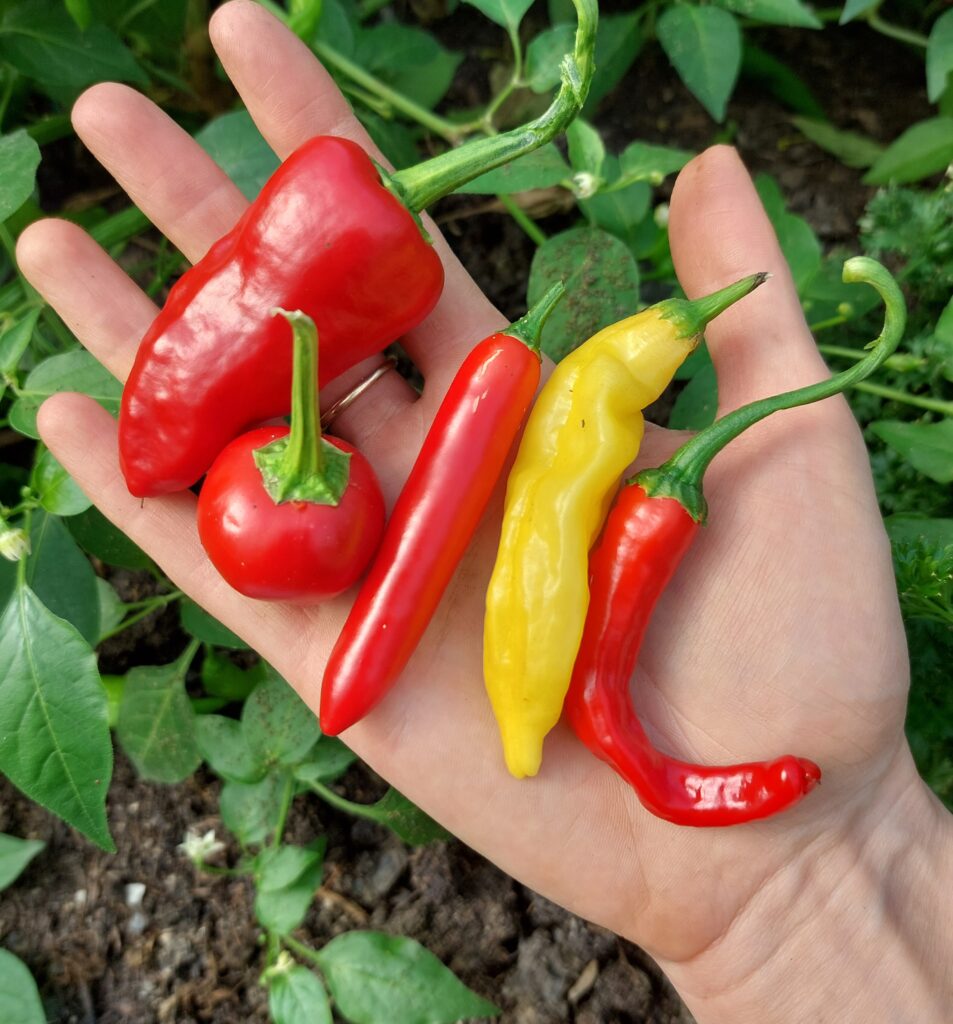Botanical name: Capsicum frutescens, C. annuum and C. chinense
Botanical Facts
Chillies are fruits that are varieties of the genus Capsicum. They belong to the Solanceae (Nightshade) family, which also include potatoes, tomatoes, aubergines and bell peppers. All capsicums are native to the Americas. They are mainly cultivated for their “hot” taste, which is caused by an alkaloid called capsaicin within the fruit. Capsaicin triggers pain signals in the nerves and induces a burning sensation when eaten. This evolution is designed to prevent the fruits from being eaten, although it does not affect birds, allowing them to consume the fruit and disperse the seeds. Most capsicums are perennial, but are treated as annuals. There are a huge amount of varieties of chilli – experts estimate around 4000! Well-known examples include Jalapeño, Cayenne, Tabasco, African Bird’s Eye, Thai Hot, Habanero and Scotch Bonnet.
Culinary facts
Wild chillies were eaten in Mexico around 7000 BC, and cultivated before 3500 BC – a long time ago! It is likely that Columbus brought them back to Europe in the late fifteenth century, and the Portuguese and Spanish transported them to India and Southeast Asia not long afterwards. Different varieties of chillies vary greatly in heat, but also in flavour profiles – they can be sweet, tangy, fruity, earthy, sour or smoky to name a few, depending on the type. Care should be taken to discover the heat rating before adding them into dishes – unless you want to risk a fiery surprise! Chillies can be measured in Scoville Heat Units. Sweet and mild chillies such as Ancho and Sweet Banana range from 0-5000 Scoville Heat units. Medium heat chillies range from 5000 – 15,000 SHU and examples include Cherry, Chipotle and Jalapeño. Medium-hot chillies, including Aji Limo and Bird’s Eye, range from 15,000 to 100,000 SHU. Hot chillies run between 100,000 to 350,000 SHU, and include Habanero, Scotch Bonnet and Carolina Cayenne. Superhot chillies extend past 350,000 SHU and should be eaten with caution. The Carolina Reaper was up until recently the world’s hottest chilli at over 2 million SHU, and the top spot is now crowned as Chilli X which hits a scorching rating of 2,693,000 SHU!
Health Benefits
Chillies tend to be eaten in small quantities due to their piquancy, but they still have lots of health benefits. High in vitamins B6, C and K, they also have high levels of antioxidants which can help to reduce the risk of many diseases such as cancer and diabetes. Although capsaicin triggers the feeling of pain when eaten, the brain also releases endorphins to relieve this pain – resulting in what some describe as a “chilli high”.
Recipe ideas
The chilli is incredibly versatile and can be used in savoury and sweet dishes. One of my favourite things to make is mango and chilli salsa – finely diced mango with slices of a good medium-hot chilli, mixed with olive oil, cracked black pepper, fresh coriander and lashings of zesty lime juice. Perfect with Jamaican Jerk chicken/jackfruit, rice and peas!

